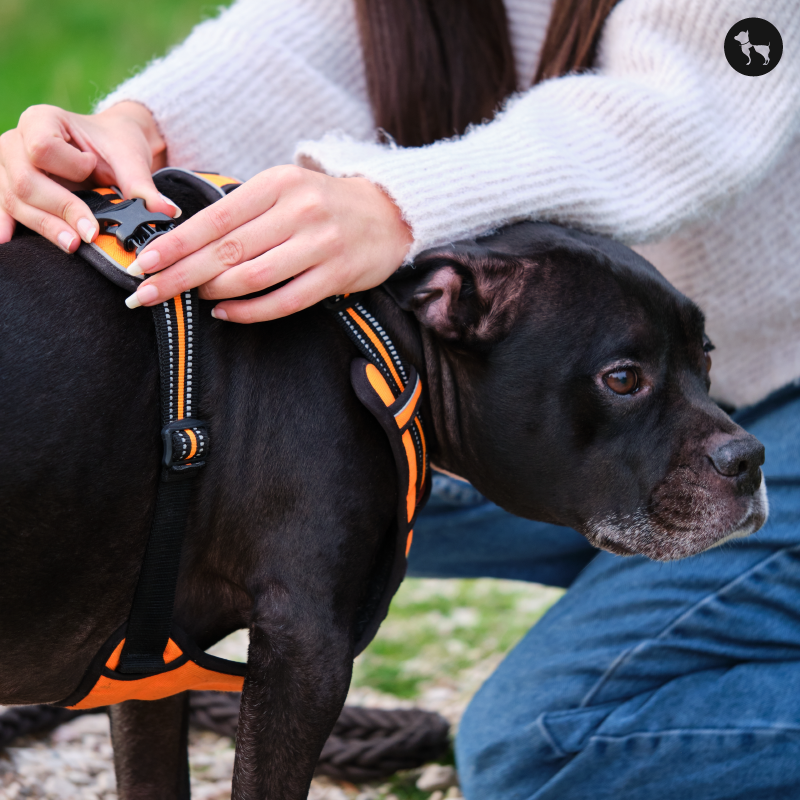
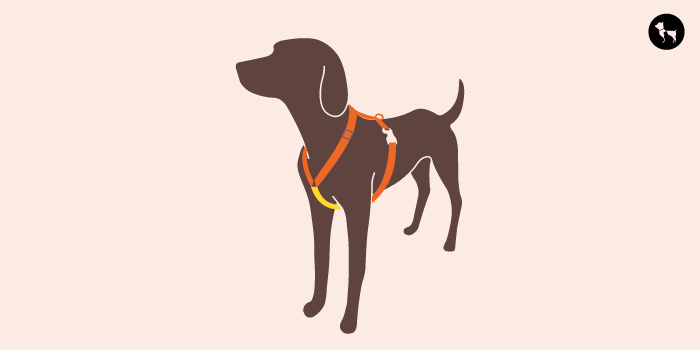
If you’ve found your way here, chances are either you’ve been sniffing on the internet looking for ways to upgrade your dog’s walk wardrobe or are curious about how a certain dog walk essential should be worn. No matter the reason, you’ve come to the right place!
First is choosing the right walk essential for dogs, which we’ve covered in our other blog. But what’s beyond that? Does the conversation end once you’re done shopping? We think not. Many pet parents have reached out to our customer care team and even our folks at the HUFT Stores and spas, with a bucket load of questions surrounding our walk favourite - the HUFT dog harness. How does one wear it? How do I make sure my dog’s comfortable? What are some of the tips we should keep in mind?
We thought to ourselves, we know the answers, why not blog it? Here are 10 tips for fitting and adjusting dog harnesses correctly. Let’s go over them!
|
Table Of Contents: - 1. Measure well for the right fit 4. Check for freedom of movement 5. Make sure the harness is aligned |
Ever worn a t-shirt that’s a size too small and makes you forget how to breathe? Or worn pants too loose that slip right off your waist? A proper fit for our dogs means comfort. A misfit harness can cause discomfort, chafing, or even restrict or hinder your dog’s natural movement. By measuring your dog, you can ensure a dog harness will fit your dog well.
You’ll need a measuring tape and your notes app for this. First measure your dog’s neck by wrapping the measuring tape around their neck. Next is chest and girth. To measure this, wrap the measuring tape around the widest part of your dog’s body, behind the front legs. Lastly, measure the length of your dog from their neck to their tail joint. Compare these measurements to the size chart and breed recommendations provided with every dog harness on our website.
HUFT Tip: If you’re confused between two sizes, we recommend ordering both to try them on or taking your dog to your nearest HUFT Store and selecting a dog harness by yourself. Our team would be happy to assist you!
We’ve seen multiple pet parents get this step wrong. A reversible harness gives you two prints in one, meaning you can wear it in two different ways. If your dog’s harness is NOT reversible, there’s only one way in which your dog can wear their harness. Next, many get confused identifying the difference between the ring attachment for the leash and the ring attachment for the ID tag. This is extremely important as the ID tag attachment isn’t designed to withstand the pressure of the leash. Always remember that with HUFT Harnesses, our logo should appear in front of your dog’s chest and not at the back.
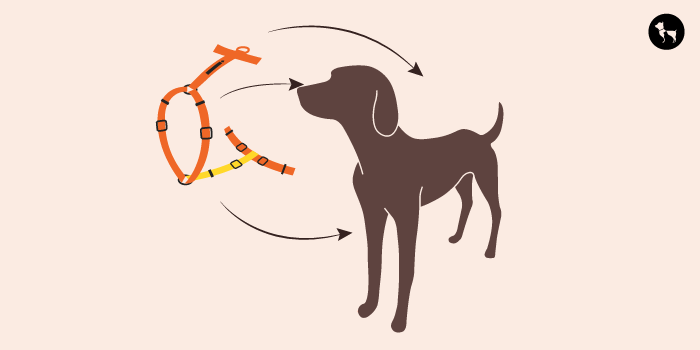
A harness of the right size still needs to be adjusted well to your dog’s unique proportions. To ensure your dog has maximum comfort while wearing the harness, start by loosening all straps before putting the harness on your dog. Once it’s on, tighten the straps gradually until the harness fits snugly on your dog’s body. A good tip is to slip two fingers between the harness and the dog’s body. If you’re unable to, it means you’ve adjusted it too tight and it is a good idea to loosen the straps a little bit. If the space between your finger and the harness is a lot, then the harness will stay loose.
Once the harness is on, your dog should be able to move comfortably without any restrictions. You’ll want to observe your dog now and ensure the harness doesn’t rub against or dig into their skin, particularly under the legs or around the chest.
What does it mean to align the harness to a dog’s body? It simply means the harness should sit comfortably across your dog’s chest and shoulders, without digging into their armpits or restricting any movement. Remember, our dogs would want to jump, run and fetch when they’re outdoors so their safety while wearing a harness is important. Ensure the straps are properly aligned and do not twist or bunch up.
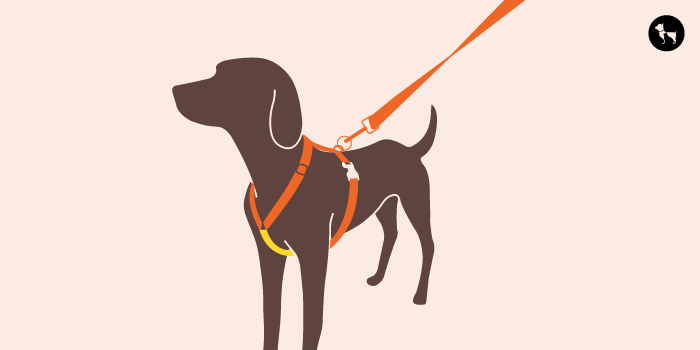
A simple way of assessing if the harness has aligned well with your dog’s body is by attaching the leash to the harness and gently tugging it in different directions. Observe if the harness shifts around excessively. If the harness is sliding to one side, chances are it hasn’t been adjusted well. Readjust the straps, and repeat this step more times until it stays securely in place.
While our dog harnesses are made with soft and breathable air mesh fabric, if not worn properly, can rub against a few areas on our dog’s body that make them irritated or uncomfortable. Your next tip is to check for these areas and adjust the straps to alleviate any discomfort. If necessary, there are many anti-chafing products which you can consider for your dog.
You have to pay attention to how your dog behaves when they’re wearing a harness. Look for common signs of discomfort such as excessive scratching, rubbing or reluctance to move. They might even try to nibble on areas where they’re feeling discomfort. If you observe these signs, either make adjustments to the fit or remove the harness so your dog can get some relief. Remember, our dog’s aren’t meant to wear harnesses 24*7, only when necessary.
If you’ve got a notorious furry bunch on your hands who loves mischief, then always double-check to make sure the harness is secure and escape-proof. Make sure all the buckles are fastened properly and are not at a risk of coming loose. Only head out of the door once you’ve done these tiny checks!
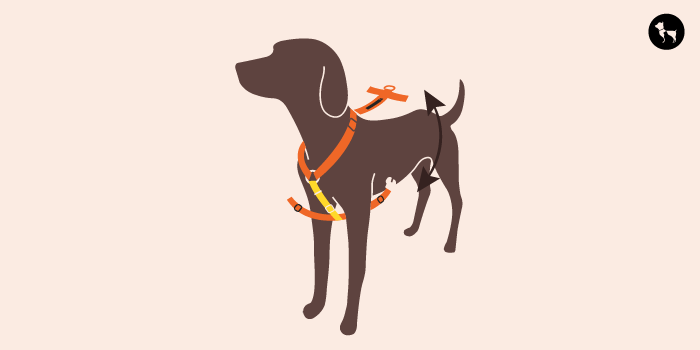
Our dogs grow with time. They might become taller, gain or lose weight or develop new muscles. A change in their body is a signal to regularly check their harness. You can make adjustments to the same harness or purchase a new one if it doesn’t fit them anymore. Remember, comfort over everything!
A loose harness can mean lack of security for your dog. If your dog’s harness is too loose, try adjusting the straps to ensure a snug fit. Make sure you can slip two fingers comfortably between the harness and the dog’s body. If the harness is still loose, double check the size by referring to the sizing chart available on the website from where you purchased the harness. A loose harness can make your dog easily slip out so make sure the harness is of the right size.
If your dog loves being an escape artist, then ensure their harness is a proper fit and is secured well. Look for any loose buckles. If the harness is a proper fit and yet your dog continues to try and escape, consider checking the size and type of the harness. You can also consult a professional dog trainer who can help you understand and address this particular behaviour in your dog.
The first step is being mindful of your dog’s anxieties and fear and not dismissing them as trivial. If your dog is afraid of something, then there’s a possibility that they have a negative association with a harness. Your duty is to reassure them that harnesses can bring positive memories to their life. When making them wear a harness, introduce the harness slowly and for short intervals only. Use their favourite dog treats and shower them with loving words. We do this so they can develop positive associations with the harness. Gradually, with time, increase the duration of your dog wearing the harness. Give your dog to adjust at their own pace.
Customising harnesses come in handy if your dog has special needs. While some dog harnesses may allow for minor adjustments, it’s generally not recommended to modify a harness extensively. Altering the harness could compromise its safety and effectiveness. Moreover, as your dog gains or loses weight, you’ll have to alter it again. Instead, choose a harness that fits your dog well by their size. Refer to the sizing chart available on the website.
Here’s what to look for when selecting a dog harness - adjustable straps for a snug fit, breathable and air mesh fabric, padding for comfort, reflective webbing or elements for visibility in low light conditions and a sturdy attachment point for the leash.
Most harnesses are designed to be compatible with dog leashes, dog collars and dog ID tags. The harness should have separate D-rings for attaching your dog’s leash and ID tag. Ensure there’s enough space for your dog’s collar to sit comfortable alongside the harness. We recommend your dog wearing either their harness or collar for better comfort.
Chafing or rubbing on your dog’s skin, difficulty breathing or moving comfortably, reluctance to walk or move and visible signs of distress or discomfort. If you see such signs, adjust the harness (or remove it) to alleviate any tightness and ensure your dog’s comfort.